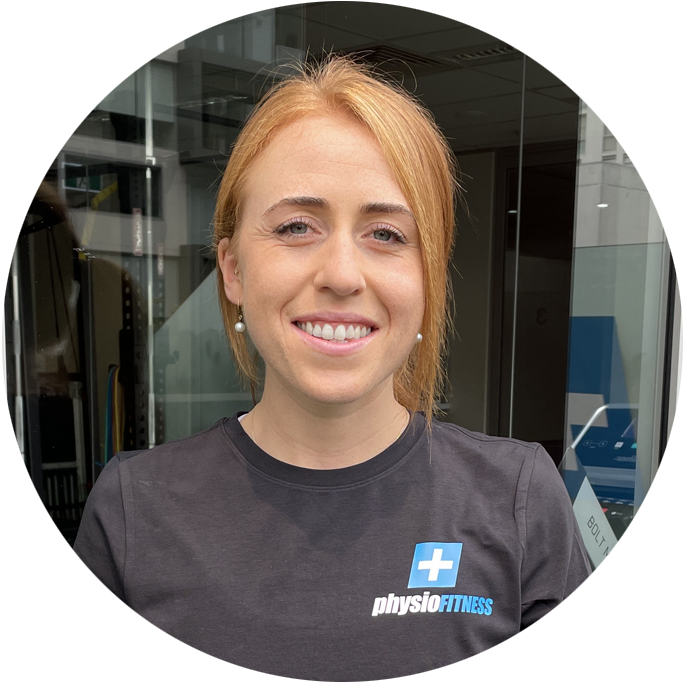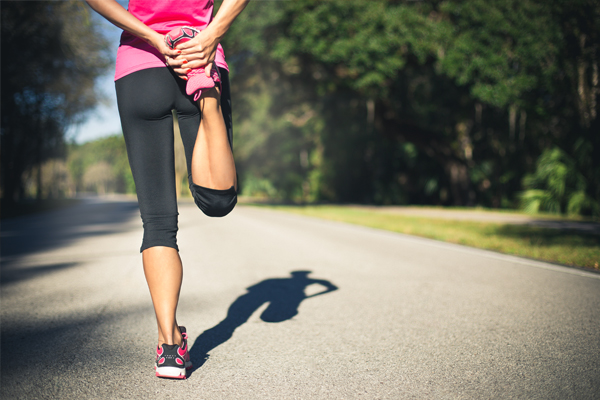
Are You Run Ready?
Strength and Mobility Secrets for Prevention of Common Running Injuries and Optimising Performance.
by Pamela Wolfe12 Mar 2025
Running is a fantastic sport, but as many of us are aware, it can be highly demanding on our bodies.
We see many running related injuries in the clinic such as patellofemoral pain; ITB pain; anterior hip pain; lateral hip pain; and achilles tendon pain.
A common theme we see accompany these injuries is that those presenting with them are not following an appropriate strengthening and mobility plan to accompany their running. In particular a lack of single leg strengthening and control work, and an appropriate mobility regime.
As we transition out of the summer months, we have many fantastic race events to look forward to such as the HOKA Half Marathon in May, Gold Coast Half and Full Marathon in July, HYROX Events, City2Surf, and Sydney full marathon in August, to name but a few.
In preparation for these events, we will see people up their training volume, including myself. I’m going to share with you some of my top strengthening and mobility exercises I am doing to prepare my body and help it keep strong and injury free as my training volume increases.
Strengthening Exercises:

1. One Leg Ball Squat
This exercise is super for building single leg strength and stability. It’s brilliant for activating our important pelvic stabilising muscles, as well as glute medius, VMO and quadriceps. The one leg ball squat is one of my favourite exercises to do alongside my running training.
.jpg)
2. Step Down
Another excellent single leg strengthening exercise which helps to improve pelvic stability, quad strength, and glute strength. The step down requires more stability and balance throughout the lower limb, therefore not only is it great for strengthening hip and knees, it helps build ankle stability also.

3. Calf Raise (Single Leg - straight knee and bent knee)
This is a super simple but effective exercise to strengthen our calf raises. Our calf muscles are one of the key players when it comes to running. During our running gait cycle, they play an important role in absorbing over 6 times our body weight when we land, and then propelling us forward as we push off.
Having strong and resilient calf muscles is crucial to optimise your running performance and help reduce your risk of developing injuries such as achilles tendinopathy and calf strains. Perform 3x10-15 reps. If this gets easy, add weight/ resistance in the form of a dumbbell/ kettlebell, or if at home load up a backpack and put it on your back.
Mobility Exercises: (night before or straight after)
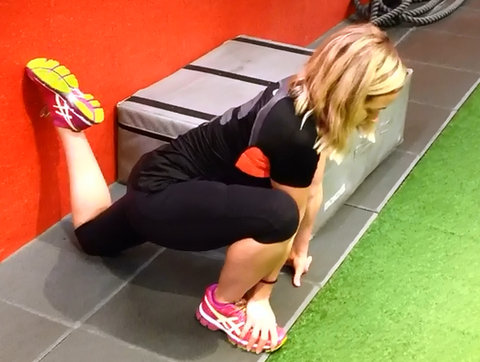
1. Hip Flexor/ Couch Stretch
This stretch is fantastic to help lengthen and relax out the hip flexor muscles. We use hip flexors a lot when we run, they are responsible for lifting our legs up and forward when we run or walk. Combined with prolonged periods of sitting down during the day, this can cause us to feel tightness at the front of our hip. Give this exercise a go after your run - aim for holds of 40-60 seconds repeat 2-3 times on each leg.
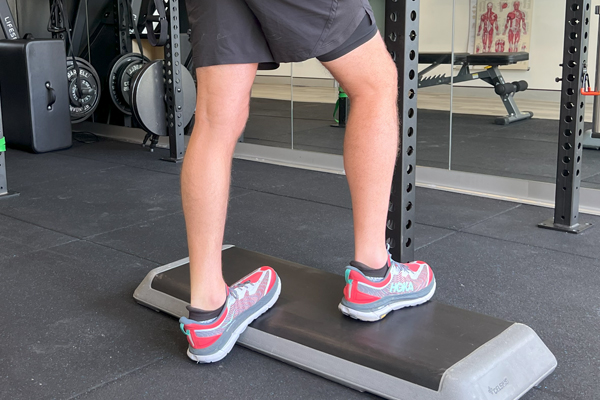
2. Calf Stretch
As we know by now, our calf muscles work hard during a run. When our muscles get overworked, that causes them to get tight. If we allow our calves to get too tight, they become less efficient at absorbing load and propelling us forward. There are many ways to stretch your calf…these are some of my favourites (Gastroc and soleus off the step) (gastroc and soleus on the floor) Give this exercise a go after your run - aim for holds of 40-60 seconds repeat 2-3 times on each leg.
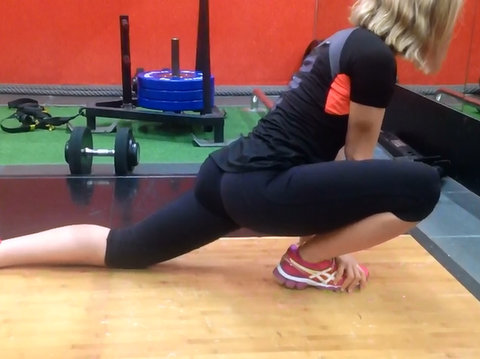
3. Deep Lunge - Hip flexion and ER
Open of the hips with this deep lunge stretch - this stretch targets hip flexors on the back leg, and glutes and adductors on the front leg
Key Mobility Tips:
When it comes to stretching and mobility, here are a few key tips: - With all of these stretches, hold the stretch to a comfortable range - do not push into any pain. You want to be able to relax into the stretch also, so don’t push into very uncomfortable ranges. Pick a range that is tolerable for you. - If doing it as part of a warm-up or pre-run, ideally, keep stretches short and dynamic. If you’re feeling stiff or tight in the lead up to a run, work through your stretches and mobility the night before or in the hour beforehand. Follow this with a dynamic warm-up and some activation work. Avoid doing sustained and static stretches immediately prior to setting off as this can down-regulate your nervous system. - If doing it as part of a cool-down/ post-run, hold the stretches for longer eg. 40-60 seconds.
Last Tips:
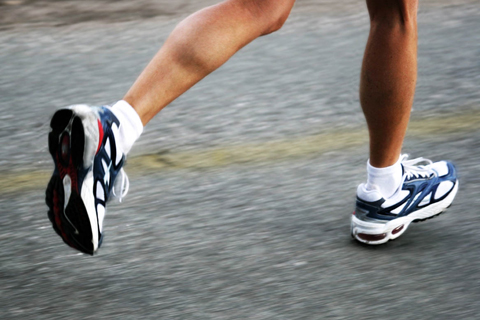
In addition to having a solid strength and mobility regime, there a few other crucial points to remember when getting stuck in to your upcoming training plan:
Don’t go out too hot: Running is a long game. Slowly increase your volume. Big jumps in mileage and frequency can lead to overuse injuries and set-backs in your training.
Balance your training: Cross training is a fantastic way to continue working on your aerobic capacity while reducing impact and repetitive strain on our body. Try swapping a run for a session on the bike, rower, or even a swim.
Recovery is key: Rest days are almost as important as training days. We need them to allow our bodies to recover and adapt to our training stimulus. Adequate recovery will reduce our risk of overuse injuries, and improve our performance. Having well planned rest days will also allow you to push harder on your training days.
Nutrition: Fuel your body with the right amount of carbs, protein, and fats to optimize your performance, recovery and tolerance to training. Getting comfortable with pre and intra race fueling is key for success. If you’re unsure of how to do this best, enlist the help of a sports dietician or nutritionist.
Sleep: Sleep has been reported as one of the best recovery tools we have. It is important for recovery of our skeletal muscle and reducing inflammatory markers. Sleep deprivation has a negative impact on our overall athletic performance, including aerobic capacity and endurance.
As always, everybody is different and there is never a one-size-fits-all option when it comes to rehab, injury prevention, and optimising performance. It is a good idea to chat to your physio and get a personalised plan that is specific to you. If you are struggling with any niggles, new or persistent, get them checked out early by a physiotherapist before they become a bigger issue which may lead to time out of training (because no runner likes that!).
References:
Lee KL, Sung JY, Oh TW, Kim HJ. Functional relationship between the anatomical structures of the calf and athletic ability. Clin Anat. 2022 Jul;35(5):544-549. doi: 10.1002/ca.23855. Epub 2022 Mar 30. PMID: 35319797.
Bishop D. Performance changes following active warm up and how to structure the warm up. Sports Med 33: 483–498, 2003.
Dáttilo M, Antunes HKM, Galbes NMN, Mônico-Neto M, DE Sá Souza H, Dos Santos Quaresma MVL, Lee KS, Ugrinowitsch C, Tufik S, DE Mello MT. Effects of Sleep Deprivation on Acute Skeletal Muscle Recovery after Exercise. Med Sci Sports Exerc. 2020 Feb;52(2):507-514. doi: 10.1249/MSS.0000000000002137. PMID: 31469710.
Gong M, Sun M, Sun Y, Jin L, Li S. Effects of Acute Sleep Deprivation on Sporting Performance in Athletes: A Comprehensive Systematic Review and Meta-Analysis. Nat Sci Sleep. 2024 Jul 9;16:935-948. doi: 10.2147/NSS.S467531. PMID: 39006249; PMCID: PMC11246080.
A common theme we see accompany these injuries is that those presenting with them are not following an appropriate strengthening and mobility plan to accompany their running. In particular a lack of single leg strengthening and control work, and an appropriate mobility regime.
As we transition out of the summer months, we have many fantastic race events to look forward to such as the HOKA Half Marathon in May, Gold Coast Half and Full Marathon in July, HYROX Events, City2Surf, and Sydney full marathon in August, to name but a few.
In preparation for these events, we will see people up their training volume, including myself. I’m going to share with you some of my top strengthening and mobility exercises I am doing to prepare my body and help it keep strong and injury free as my training volume increases.
Strengthening Exercises:

1. One Leg Ball Squat
This exercise is super for building single leg strength and stability. It’s brilliant for activating our important pelvic stabilising muscles, as well as glute medius, VMO and quadriceps. The one leg ball squat is one of my favourite exercises to do alongside my running training.
.jpg)
2. Step Down
Another excellent single leg strengthening exercise which helps to improve pelvic stability, quad strength, and glute strength. The step down requires more stability and balance throughout the lower limb, therefore not only is it great for strengthening hip and knees, it helps build ankle stability also.

3. Calf Raise (Single Leg - straight knee and bent knee)
This is a super simple but effective exercise to strengthen our calf raises. Our calf muscles are one of the key players when it comes to running. During our running gait cycle, they play an important role in absorbing over 6 times our body weight when we land, and then propelling us forward as we push off.
Having strong and resilient calf muscles is crucial to optimise your running performance and help reduce your risk of developing injuries such as achilles tendinopathy and calf strains. Perform 3x10-15 reps. If this gets easy, add weight/ resistance in the form of a dumbbell/ kettlebell, or if at home load up a backpack and put it on your back.
Mobility Exercises: (night before or straight after)

1. Hip Flexor/ Couch Stretch
This stretch is fantastic to help lengthen and relax out the hip flexor muscles. We use hip flexors a lot when we run, they are responsible for lifting our legs up and forward when we run or walk. Combined with prolonged periods of sitting down during the day, this can cause us to feel tightness at the front of our hip. Give this exercise a go after your run - aim for holds of 40-60 seconds repeat 2-3 times on each leg.

2. Calf Stretch
As we know by now, our calf muscles work hard during a run. When our muscles get overworked, that causes them to get tight. If we allow our calves to get too tight, they become less efficient at absorbing load and propelling us forward. There are many ways to stretch your calf…these are some of my favourites (Gastroc and soleus off the step) (gastroc and soleus on the floor) Give this exercise a go after your run - aim for holds of 40-60 seconds repeat 2-3 times on each leg.

3. Deep Lunge - Hip flexion and ER
Open of the hips with this deep lunge stretch - this stretch targets hip flexors on the back leg, and glutes and adductors on the front leg
Key Mobility Tips:
When it comes to stretching and mobility, here are a few key tips: - With all of these stretches, hold the stretch to a comfortable range - do not push into any pain. You want to be able to relax into the stretch also, so don’t push into very uncomfortable ranges. Pick a range that is tolerable for you. - If doing it as part of a warm-up or pre-run, ideally, keep stretches short and dynamic. If you’re feeling stiff or tight in the lead up to a run, work through your stretches and mobility the night before or in the hour beforehand. Follow this with a dynamic warm-up and some activation work. Avoid doing sustained and static stretches immediately prior to setting off as this can down-regulate your nervous system. - If doing it as part of a cool-down/ post-run, hold the stretches for longer eg. 40-60 seconds.
Last Tips:

In addition to having a solid strength and mobility regime, there a few other crucial points to remember when getting stuck in to your upcoming training plan:
Don’t go out too hot: Running is a long game. Slowly increase your volume. Big jumps in mileage and frequency can lead to overuse injuries and set-backs in your training.
Balance your training: Cross training is a fantastic way to continue working on your aerobic capacity while reducing impact and repetitive strain on our body. Try swapping a run for a session on the bike, rower, or even a swim.
Recovery is key: Rest days are almost as important as training days. We need them to allow our bodies to recover and adapt to our training stimulus. Adequate recovery will reduce our risk of overuse injuries, and improve our performance. Having well planned rest days will also allow you to push harder on your training days.
Nutrition: Fuel your body with the right amount of carbs, protein, and fats to optimize your performance, recovery and tolerance to training. Getting comfortable with pre and intra race fueling is key for success. If you’re unsure of how to do this best, enlist the help of a sports dietician or nutritionist.
Sleep: Sleep has been reported as one of the best recovery tools we have. It is important for recovery of our skeletal muscle and reducing inflammatory markers. Sleep deprivation has a negative impact on our overall athletic performance, including aerobic capacity and endurance.
As always, everybody is different and there is never a one-size-fits-all option when it comes to rehab, injury prevention, and optimising performance. It is a good idea to chat to your physio and get a personalised plan that is specific to you. If you are struggling with any niggles, new or persistent, get them checked out early by a physiotherapist before they become a bigger issue which may lead to time out of training (because no runner likes that!).
References:
Lee KL, Sung JY, Oh TW, Kim HJ. Functional relationship between the anatomical structures of the calf and athletic ability. Clin Anat. 2022 Jul;35(5):544-549. doi: 10.1002/ca.23855. Epub 2022 Mar 30. PMID: 35319797.
Bishop D. Performance changes following active warm up and how to structure the warm up. Sports Med 33: 483–498, 2003.
Dáttilo M, Antunes HKM, Galbes NMN, Mônico-Neto M, DE Sá Souza H, Dos Santos Quaresma MVL, Lee KS, Ugrinowitsch C, Tufik S, DE Mello MT. Effects of Sleep Deprivation on Acute Skeletal Muscle Recovery after Exercise. Med Sci Sports Exerc. 2020 Feb;52(2):507-514. doi: 10.1249/MSS.0000000000002137. PMID: 31469710.
Gong M, Sun M, Sun Y, Jin L, Li S. Effects of Acute Sleep Deprivation on Sporting Performance in Athletes: A Comprehensive Systematic Review and Meta-Analysis. Nat Sci Sleep. 2024 Jul 9;16:935-948. doi: 10.2147/NSS.S467531. PMID: 39006249; PMCID: PMC11246080.
B.Sc (Hons) Physio, B.Sc.HPS, APAM
Physiotherapist
Physiotherapist
